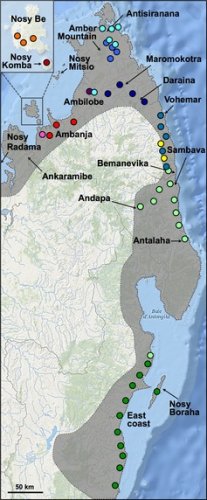Hi!
Do panther chameleons prefer certain regional colors when breeding? That is, does a female Nosey Be prefer colors typical to that region or is color irrelevant? Any discussion on the role of color variation on sexual selection would be very much appreciated.
I've looked online and on google scholar but have not been able to find anything that directly covers this.
Do panther chameleons prefer certain regional colors when breeding? That is, does a female Nosey Be prefer colors typical to that region or is color irrelevant? Any discussion on the role of color variation on sexual selection would be very much appreciated.
I've looked online and on google scholar but have not been able to find anything that directly covers this.







